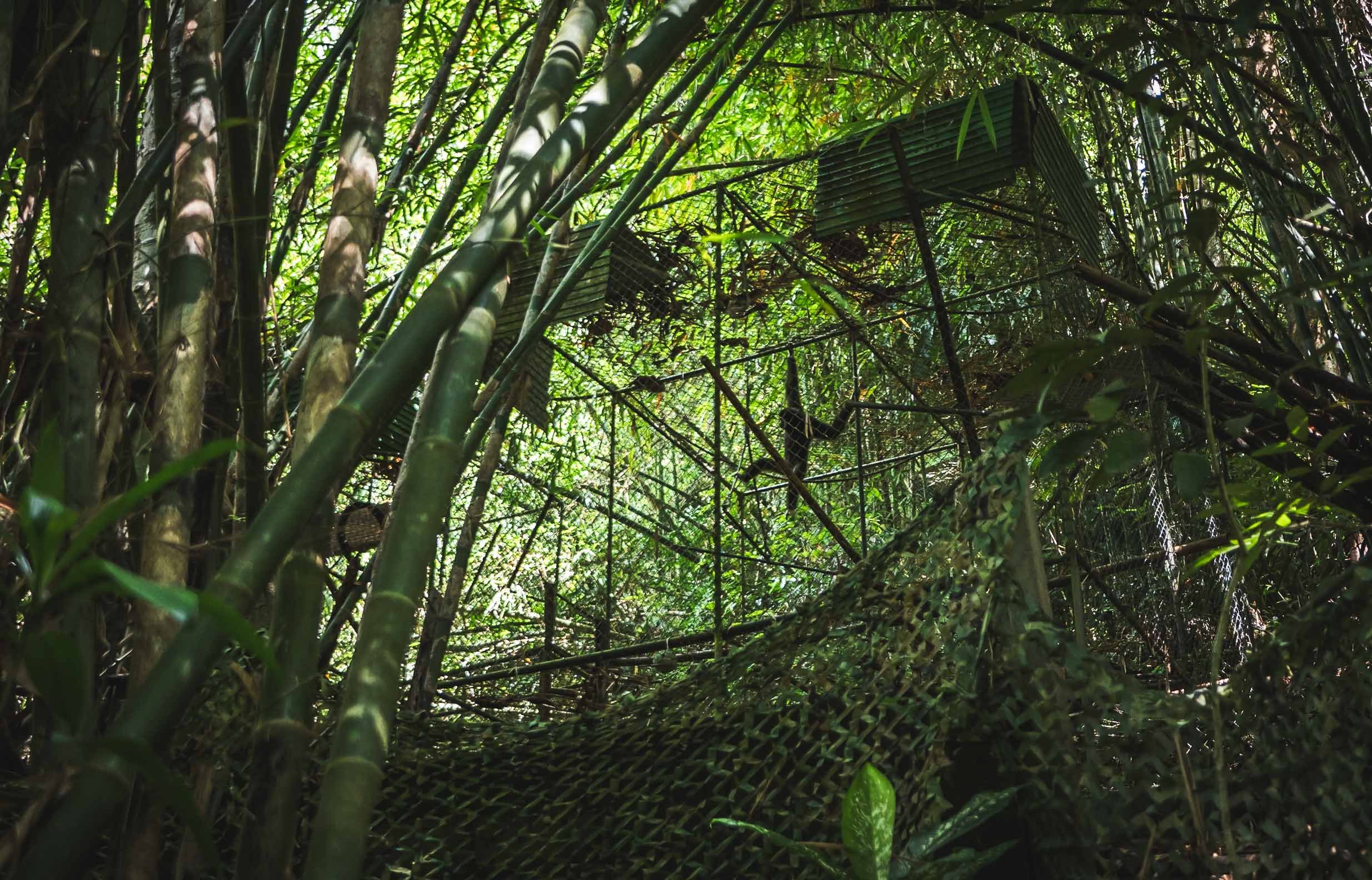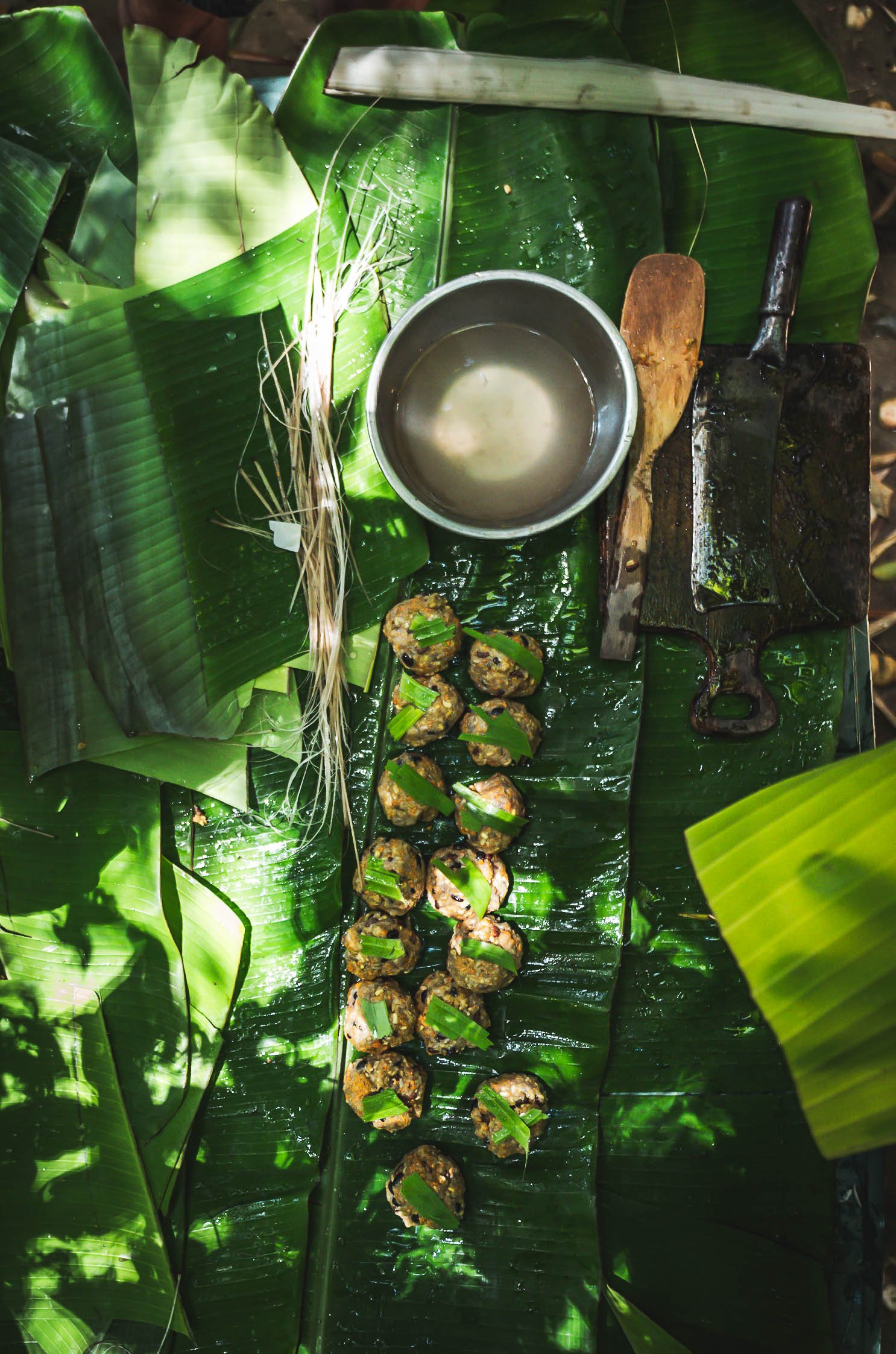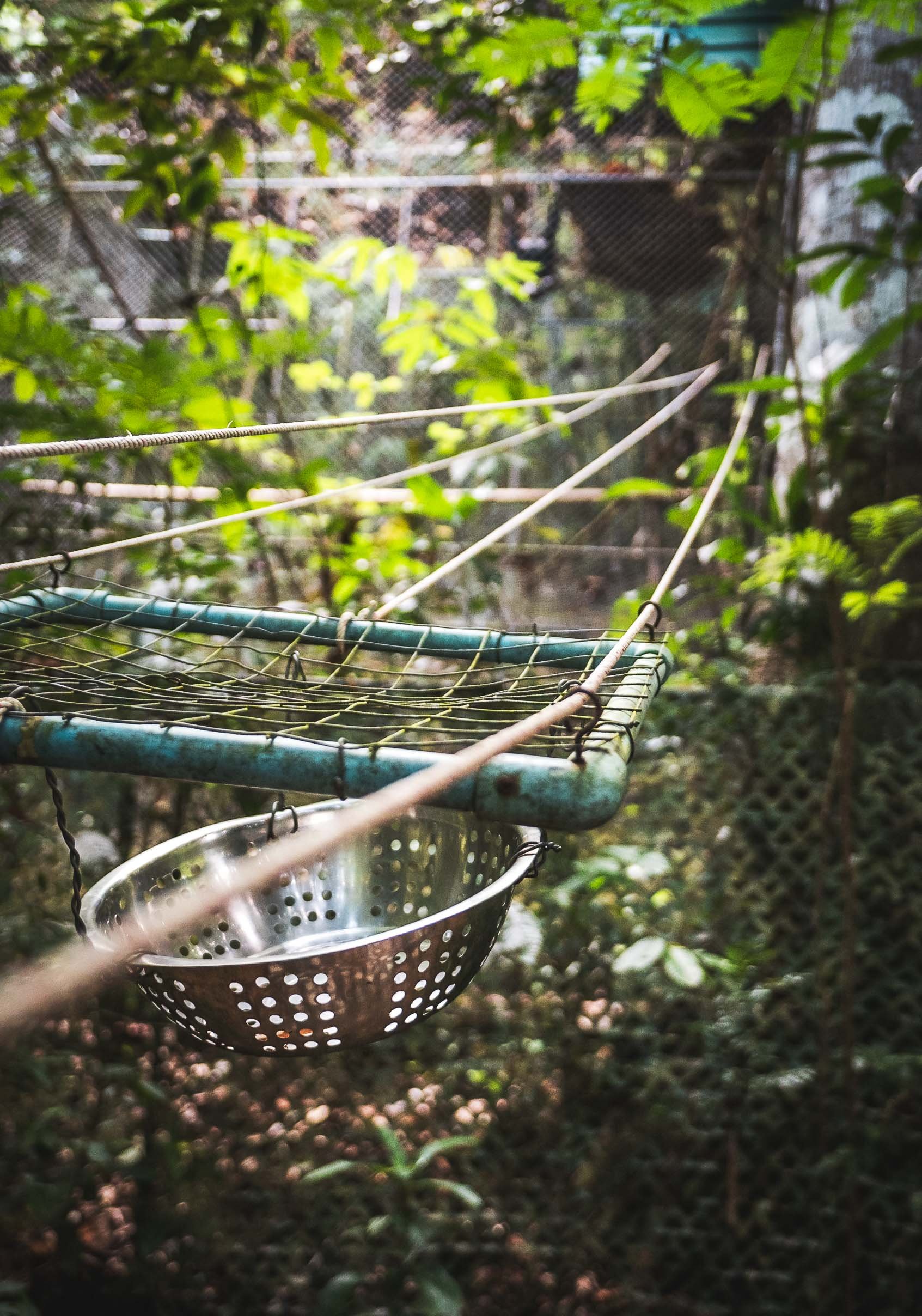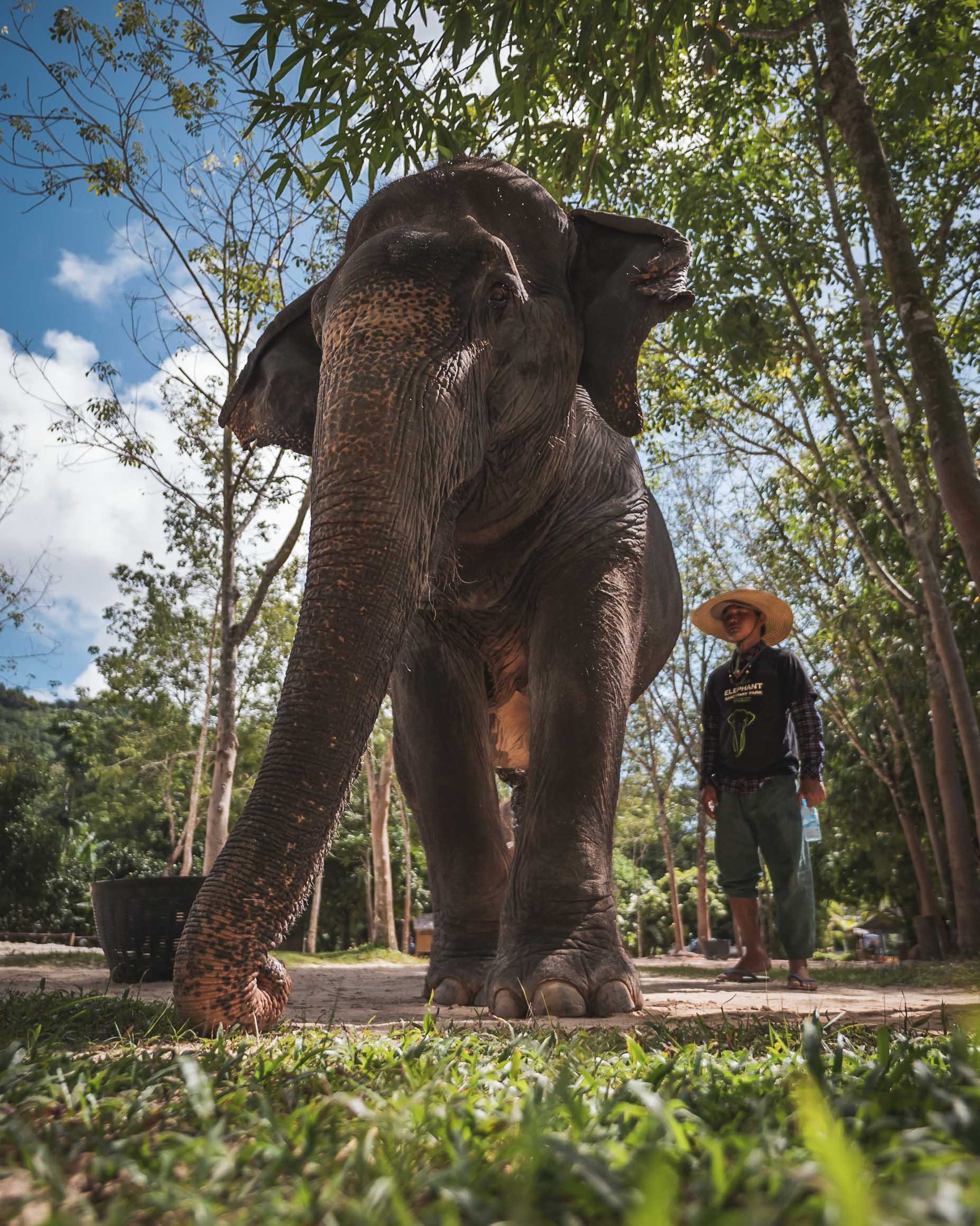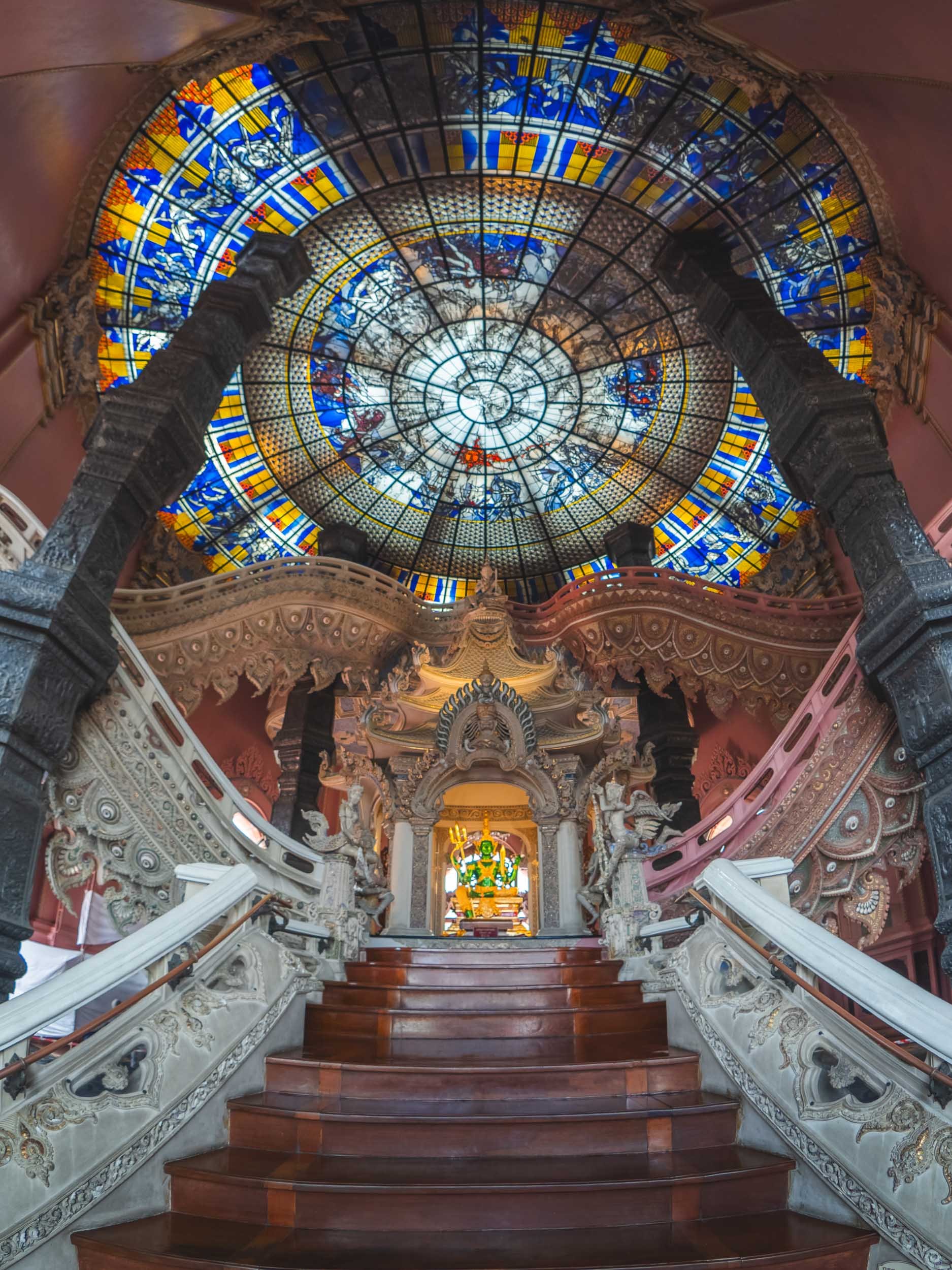A First Glimpse of Thailand
Although I spent a few weeks in Thailand in July and August of 2023, they happened to be less focused on exploring and travel. Nevertheless, both Phuket (where I mainly worked on my doctorate application, about which I might write at some point here) and Bangkok (which was more of a transit stop to recover from two previous trips I have yet to write about) had a few sights to offer that I did want to make time for and document. Read on to find out what they are…
Phuket
While Phuket is famous for many things - some more questionable than others (I did visit Patong but couldn’t get myself to take photos there. It does have a nice German restaurant though…) - one of its main attractions are the nearby islands of Phi Phi. Didn’t visit those either, but whenever I’m in a destination during full moon I try to look for some possible compositions. In this case, the rise of our lunar companion happened to be aligned pretty well with the Phi Phi islands in the distance, which meant I was out in the humidity to capture it rising over the Andaman sea just after sunset.
Phuket is home to a few more famous islands, among them the so-called James Bond island, locally called Khao Phing Kan, a limestone formation featured in The Man with the Golden Gun.
The Gibbon Rehabilitation Project
Another famous sight of Phuket are its many animal attractions. Sadly, they originate from a sad past that is still not fully eradicated, namely monkeys, apes, snakes, elephants, and other animals serving as tourist entertainment with very little care for their welfare. The situation has improved drastically over the last decade, for instance its much criticized zoo hosting tigers and bears in small concrete cages and charging tourists (who were stupid enough to pay) to pose with them, was finally closed down in 2022. Elephant riding and half-drugged loris are still things that exist on the island though - on the other end of the spectrum, a place that is countering and trying to reverse some of the effects of this issue is the Gibbon Rehabilitation Project.
A visit to this place (a maximum of 10 people are allowed per day) is really interesting, with a personal small group tour that involves making food and actually delivering it to the apes, helped by our very knowledgeable guide called Thanaphat (who’s been amazing, and his story is worth listening to). Gibbons have been extinct in the wild on the island, and are now, through great and lengthy efforts, slowly being re-introduced into the last remaining rainforests that still exist here. In the past, they were home to tigers, leopards, and more species, whose habitat has made way for human development.
There’s no direct contact with the animals, and feeding is accomplished via a rope pulled up to the cage. At the same time, visitors are asked to fill out the daily observation sheets for “their” gibbon, which helps the local volunteers and members of the project to assess the ape’s development and readiness for release. Often, that readiness is never reached, the amount of time these gibbons spent in human captivity for the benefit of tourists makes them completely dependent and they come back from their release sites.
While gibbons are apes and thus part of the same family as humans, they are classified as “Lesser” apes, as opposed to the Great Apes like Gorillas. Nevertheless most of the species are now endangered, some of them critically so, making it worthwhile to support organizations like this one - adopt a gibbon!
A Sanctuary for Giants
Phuket is also home to countless elephant attractions - many of them designate themselves as “sanctuaries” for the many elephants that have spent their lives as tourist attractions or were chained and beaten to perform work in the forests and farms of the island. There are still black sheep, but it seems many of those establishments are now run in a reasonable way, do not allow elephant riding, don’t chain them, and provide food of sufficient quality and amount (an elephant eats up to 150kg a day), and space for their elephants. Given the rapid decline of elephants in Thailand (from 50,000 in the middle of last century to 3,500 nowadays, with less than 500 truly wild ones) they arguably do a necessary job.
I went to visit the Green Elephant Sanctuary Park, established by a Swiss national, and while it’s a tourist destination with groups, it doesn’t feel crowded and there’s room for personal interaction and some education. The owners have also established a clinic for elephants, which they are trying to get more funding for.
Ever since my encounters in Kenya I’ve developed a much deeper appreciation for these animals, and while the Asian elephant is different from their African counterparts, their intelligence and social bonds shine the same way.
Care Quarters
The employees and mahouts (carers) live on site with the animals, spending the whole day with their elephants, allowing two tourist interactions daily.
Bath time
The visit ends in the big water pond of the site, where you can help the elephants cool down from the island’s hot and humid weather. Watch your camera…
Majestic
Not many animals make you feel the same way when you stand in front of them.
Elephants are the national animal of Thailand and prominently feature across many cultural aspects in the country - more on that later.
I might be back in Phuket one day to explore its islands and take more photos of the old town, which features a beautiful collection of sino-portuguese mansions and several buildings dating back to the time of European and Chinese influence. For now, let’s continue with the capital.
The (Temple) Capital
Home to over 10 million people (and much more in the metro region), Bangkok has endless sights: Its street life, museums, temples, and skyline definitely mean you can spend countless hours exploring and looking for photos. On the other hand, its insane traffic, disorganized urban planing (it lacked proper zoning until very recently), and hot humid weather (coupled with my exhaustion from a few previous trips) meant I didn’t quite have the urge to see or take photos of it all. Nevertheless, below are some of my favorites, with the best (for me anyway) saved for last.
It’s impossible to miss the many amazing temples in the city, and some of the most beautiful ones were also on my list to visit. Wat Arun (above) was one of them, although I only photographed it from opposite the Chao Phraya river. This temple with its beautiful porcelain encrusted pagoda is almost 400 years old.
Wat Suthat Thepwararam Ratchaworamahawihan
Don’t ask me to pronounce it, but this was maybe my favorite temple in the Phra Nakhon area, where many of them can be found.
The temple is famous for its interior featuring beautiful murals and drawings depicting various scenes from Buddhist narratives and history. It is designated as a royal temple of the first grade, one of ten such temples in Bangkok.
Wat Ratchabophit
Another beautiful temple close by with its 43m tall golden chedi, and beautiful tiled exterior walls.
Wat Pho
A temple with an easier name and one of the oldest and largest complexes in Bangkok was the last I visited (although there are another half a dozen beautiful ones to be explored in the area).
The temple was originally completed in the 16th century, before the city was the capital.
It’s home to over 1000 buddha images, but none are as well known as the huge reclining version, situated in its own chapel. Added in 1832, it’s 15m high and 46m long, and was made of brick, which was then plastered and covered in gold. The toes visible on the right are in-laid with mother of pearl.
It was time to leave the city for a day trip, trying to see two of its (potential) photographic points of interests to the west. Honestly speaking, neither of them quite fulfilled that promise, as both spots lost a lot of their natural charm and origins, having turned into a pure tourist destination.
Mae Klong Railway Market
The first destination was a village in the province of Samut Songkhram, about 1,5h drive. It's famous for its railway which literally runs through the local market for the last 500m before reaching the station and going back.
Arriving very early (before the first train) means you get to see the locals going about their business, buying and selling vegetables, meat, fish, and a few other random items. Many of the tables and goods are literally placed on top of the train track - as you’ll soon discover, in a manner that’s very flexible if required…
Coming Through
Shortly before the train arrives, the speakers announce it to the merchants (and the sightseers), who within a couple of minutes fold their sunroofs backwards, pull in the tables (which are mounted on wheels) and position their trays and plates in a way that the train will just have enough clearance to avoid dragging a few veggies along to the station.
Tight Spaces
The photos barely do justice to how tight the spots left and right of the track can become, as sun shades, tables, tourists, seller, buyers, and goods get squeezed into small stalls. While the train moves slowly, I did see one or the other anxious person and a few sellers shouting at people (they seemed to have an eye for which tourist was prone to get run over by a train).
The Aftermath
Once the train passed, you’ll see the hundreds of tourists that squeezed into the stalls either side coming out on the tracks, which just an hour earlier were home to a calm local market. I can’t blame them, it’s definitely an interesting spectacle to observe, and I was one of them, but I can’t say it was particularly enjoyable at this point.
Hence it was time to leave, and move on to another type of special market - a floating one. Called Damnoen Saduak, it’s probably the most famous of its type, and thus admittedly most likely to be touristy as well.
Damnoen Saduak Floating Market
Not far from the train spectacle lies another spot that was once only a way for locals to sell their goods. This time from a boat, moving along the channels and selling to people on other boats or on the shoreline. While the Mae Klong Railway market does preserve some of the original spirit (until the train arrives), this one has become nothing more than a tourist attraction by now.
This “market” is also still home to the aforementioned animal attractions that are still common in Thailand, with large snakes meant to attract tourists who are asked to pay to have them draped around their necks (and plenty did…), and I also spotted a loris being offered to visitors for posing. While for the snake and loris it’s definitely abuse, it didn’t seem to bother this cat luckily.
There is very little left of what I can imagine was once a very interesting genuine market experience, but by walking along the canals I did manage to capture a few impressions of vendors that probably offered their goods to people other than tourists many years ago, and still make and sell their local dishes.
From what I gathered through my guide, the other markets of similar nature in Bangkok aren’t very different, but I did hear that some of them still have days where local trade takes precedence over tourism - need to find them on the next visit! I definitely didn’t spend too much time at Damnoen Saduak and would recommend a quick stop at best, if you happen to visit the train market (which somehow is still worth it).
Back in Bangkok, the usual rain clouds decided to unleash some torrential rains over part of the city, but stopped before sunset, giving me the opportunity to get some cityscape photos from the rooftop of the Banyan Tree hotel (including the endless traffic below)
Erewan Museum
A very different kind of temple awaits on the southern outskirts of the city. The 250 ton, 29m tall, three headed bronze elephant statue on its roof ensures you can’t miss it, but also holds a surprise inside…
… which is that you can take a small spiral staircase up one of the elephant legs, leading to the actual chapel in the belly, adorned with various art pieces, Buddha images, and representations of the solar system.
Below this world of the heavens lie the human and the underworld. While the Erewan museum was privately built to house an art and antique collection, the three-headed elephant also acts as a symbol of the cosmography in Hindu mythology. Its gardens are also worth a stroll, with plenty of small rivers, waterfalls, sculpted plants, and - you guessed it - a lot more elephant representations.
Chinatown
Yaowarat Road, the centre of Bangkok's Chinatown. Chinese immigrants historically formed the majority of the city's population.
The history of the city since it became Thailand’s capital in 1782 (then still the Siamese Kingdom) is filled with immigrant populations from different parts of Asia, including large Vietnamese and Malay communities, and it remains a cosmopolitan city today. Fun fact: The city changed its name several times throughout the course of history, and its full ceremonial Thai name features a mind-boggling 168 letters, earning it a place in the Guiness World Record as the longest place name.
Into the Night
Bangkok’s nightlife is meant to be legendary - for better or worse - and has earned it the nickname “Sin City of Asia”. I wouldn’t be able to judge that 😇 but I did enjoy a walk around after sunset to capture some of the neon lights and rain puddles.
The neon sign forest seen from one of the elevated train stations, which can provide interesting photo opportunities of the streets below, and is also a good option to make your way through the city and (partly) escape the traffic.
Infrastructure
Bangkok now has four different mass transit systems, the first of which started operating in 1999 - most of it runs above ground, often built on top of major roads like here, and some of the transfer station hubs are 4 or 5 floors tall.
Biggest Buddha
After 5 years of construction in between the network of canals in the oldest part the city, there now stands a giant Buddha in glowing gold. 69m tall and costing more than 3m USD, it was completed in 2021.
It’s part of the 400 year-old Wat Paknam Phasi Charoen temple. Large buddha images have remained a popular attraction in Thailand, and often bring significant income for a temple or even revive a whole district.
Please take a moment to spot the cat in the image on the left below ;)
Train Tree Tunnels
My favorite place in the city was a little away from its hustle and bustle, in the outskirts around the Chom Thong area. Here, the early morning hours see people get ready for work, kids preparing for school, merchants opening their shops, and monks heading to the temples, in a somewhat quieter and greener atmosphere than most of the rest of the city.
The main attraction for me though was the local train line running through the area and past the dispersed shops and little stations along its track. During the morning hours, a few commuter trains slowly make their way through, and you can catch some great compositions.
In several places along the few kilometers of tracks I followed, trees have formed their own little tunnels (probably with some human encouragement to make way for the train). Either way, this is maybe my favorite photo from Bangkok.
Out of the way!
People got used to life along the tracks, and so did the conductors and operators.
There’s definitely more to see in Thailand, but for now this is all I had to show you!





